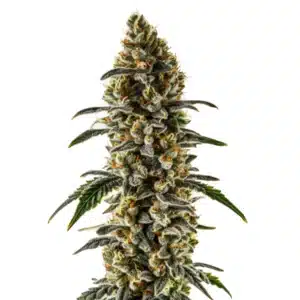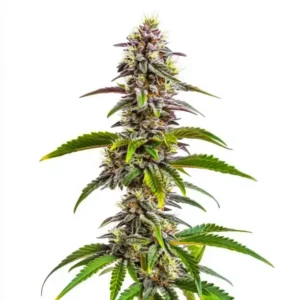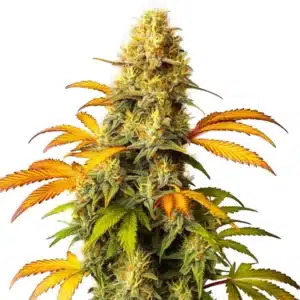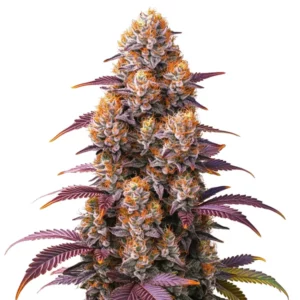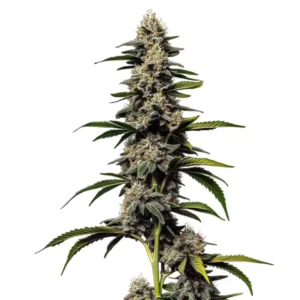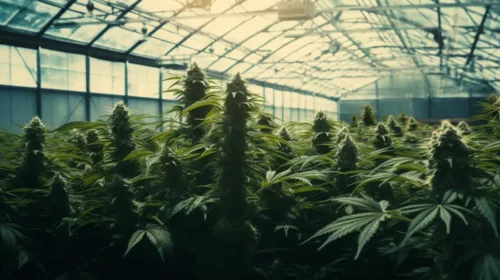This section explains how cannabis use relates to driving, emphasizing the importance of knowing both its effects and the legal regulations surrounding its use on the road.
Legal Aspects of Cannabis and Driving
Navigating the legal landscape of cannabis use while driving is vital for both staying within the law and ensuring road safety. This detailed section covers the various legal issues, penalties, and important considerations that drivers should be aware of regarding cannabis and driving.
Recommended Strains
Cannabis and Driving Laws
Cannabis driving laws are primarily concerned with preventing impaired driving and ensuring public safety. Most regions with legalized cannabis have specific statutes that prohibit operating a vehicle under the influence of cannabis, akin to alcohol DUI laws. These laws are enforced with the help of blood THC concentration levels, similar to blood alcohol content levels in drunk driving cases. However, determining impairment from cannabis can be more complex due to the way THC metabolizes in the body, often remaining detectable long after its effects have worn off.
Is It Illegal to Have Weed in the Car?
The legality of possessing cannabis in a car varies by jurisdiction. In states where cannabis is legal, it must typically be kept in a sealed container and sometimes in the trunk or an area not accessible to the driver or passengers while the vehicle is moving. Open containers of cannabis are generally treated similarly to open alcohol containers, with similar legal repercussions for non-compliance.
Smoking Weed in Car
Smoking weed in a car is usually illegal, even in states where cannabis use is legalized. This law is designed to prevent both driver impairment and exposure of passengers to secondhand smoke. Penalties for smoking weed in a car can include fines and other legal consequences similar to those for public consumption of cannabis.

Legal Consequences of Driving Under the Influence of Cannabis
The consequences of driving under the influence of cannabis can be severe. Penalties typically include fines, possible jail time, and suspension of one’s driver’s license. Repeat offenses can lead to increased penalties and may impact a person’s future employment opportunities and insurance rates. Some regions also require participation in drug education or rehabilitation programs.
Legal Defenses in Cannabis-related DUI Cases
Defending against a cannabis-related DUI charge can be complex. Common defenses include challenging the legality of a traffic stop, disputing the accuracy of THC level tests, and arguing against the assumption of impairment based solely on the presence of THC. Legal outcomes can vary widely depending on the evidence and the specifics of the law in the jurisdiction where the incident occurred.
How to Handle a Traffic Stop If You Have Cannabis in Your Vehicle
If stopped by law enforcement and you have cannabis in your vehicle, it’s important to remain calm and respectful. However, you have the right to remain silent about your recent cannabis use or any other self-incriminating topics. It’s also advisable to keep any cannabis in a compliant, sealed container and produce documentation, such as a medical marijuana card, if applicable. This can help clarify the legality of your possession and potentially mitigate legal repercussions.
Grasping these legal aspects not only aids cannabis users in managing their rights and responsibilities but also highlights the importance of being informed and cautious when it comes to cannabis and driving. This promotes safety for all road users and aligns with the broader objectives of traffic safety laws and public health standards.
Promos & Deals
Cannabis and Driving Safety
The intersection of cannabis use and driving brings important safety concerns, mainly because THC impairs cognitive and motor skills required for safe driving. Being aware of these effects and following safety guidelines is essential for anyone who consumes cannabis and drives.
How Cannabis Affects Driving Skills
Cannabis affects driving skills in several key ways. THC, the primary psychoactive component in cannabis, impairs cognitive functions across multiple domains, including attention, reaction times, decision making, and coordination. This can lead to a decreased ability to respond to sudden changes in traffic conditions, difficulty in maintaining lane position, and an impaired ability to judge distances and speeds. Studies have shown that this can increase the risk of accidents, as drivers under the influence of cannabis are less able to adapt to dynamic road environments.
THC Impairment and Legal Driving Limits
Many regions have implemented legal THC limits for drivers, akin to blood alcohol concentration levels. These limits are often set very low, reflecting a zero-tolerance policy in some areas. However, the science behind these limits is still evolving. Unlike alcohol, the amount of THC that leads to impairment can vary significantly between individuals, depending on their tolerance and consumption habits. This makes standardization challenging and is a contentious issue in the formulation of laws and enforcement practices.
Preventative Measures for Safe Driving
To ensure safety on the roads, cannabis users are advised to take certain preventative measures:

- Wait Periods: Cannabis users should wait several hours before driving, especially if they have consumed cannabis via inhalation. Edibles, which have a delayed onset of effects, require even longer wait times before it is safe to drive.
- Plan Ahead: If planning to consume cannabis, individuals should arrange alternative transportation options such as public transit, ridesharing services, or designated drivers.
- Understand Personal Limits: Users should understand and respect their personal limits and avoid driving if they feel any impairment, regardless of whether they believe they are below the legal THC limit.
- Educate and Inform: Continuous education about the risks associated with drugged driving can help users make informed decisions. Awareness campaigns and driver education programs often address these issues directly.
Role of Roadside Testing
Law enforcement agencies use various methods to test for impairment due to cannabis. These can include physical coordination tests, cognitive tests, and the use of oral fluid devices to detect the presence of drugs. However, the reliability of these tests in accurately determining impairment is under ongoing study and debate.
Promoting Safety Through Policy and Education
Governments and safety organizations continue to develop strategies to mitigate the risks associated with driving under the influence of cannabis. This includes public education campaigns, stricter laws, and research into more accurate testing methods. Education programs, particularly those targeting young drivers, emphasize the dangers of mixing cannabis with driving.
Technological Advances in Safety Monitoring
Technological advancements are also playing a role in enhancing road safety concerning cannabis use. Devices like mobile apps that assess levels of impairment through cognitive testing before allowing access to car keys are in development. Additionally, vehicle systems that detect erratic driving patterns and warn the driver are becoming more sophisticated and could play a role in preventing accidents due to impairment.
Preventative Measures for Safe Driving
Ensuring road safety in the context of cannabis use involves adopting a series of preventative strategies aimed at reducing the risk of driving while impaired. Here are several key measures that individuals, communities, and authorities can implement to promote safer driving behaviors among cannabis users.
Recognizing Impairment and Personal Limits
1. Self-awareness of Effects: Individuals should be aware of the specific effects cannabis has on their bodies and minds. This includes recognizing how long the impairment might last and the intensity of its effects, which can vary based on the strain and method of consumption (smoking vs. edibles, for instance).
2. Tolerance Levels: Regular users might develop a tolerance to some effects of cannabis, but they should not assume this tolerance extends to their ability to drive safely. Even experienced users can experience unpredictable levels of impairment.
Timing and Planning
3. Timing of Consumption: Avoid driving for several hours after using cannabis, with a general rule of waiting at least 3-4 hours after smoking or vaping, and at least 6-8 hours after consuming edibles, as their effects can peak later and last longer.
4. Alternative Transportation Plans: Always plan for alternative transportation options such as taxis, rideshares, or public transport if cannabis use is anticipated. Encourage the use of designated drivers within social groups.
Education and Training
5. Driver Education: Integrate educational content about the risks of drugged driving into driver’s education courses. These programs should provide factual information about how cannabis impairs driving abilities and the legal repercussions of driving under the influence.
6. Public Awareness Campaigns: Support and develop public awareness campaigns that clearly communicate the dangers of driving under the influence of cannabis. These campaigns can use various media platforms and often include testimonials, statistics, and scientific facts to make an impact.
Legal and Community Support
7. Community Programs: Encourage local communities to establish support programs that advocate for and educate about safe driving practices. Community-led initiatives can be particularly effective in reaching local populations with tailored messages.
8. Policy Development: Support policies that create safer road environments, such as clear and enforceable drug-impaired driving laws, which are necessary to deter risky behaviors and reduce accidents.
Technological Solutions
9. Use of Technology: Promote the use of personal breathalyzers or mobile apps that can help individuals assess their impairment levels. These technologies can act as a deterrent by providing a visual reminder of impairment levels and discouraging driving when unsafe.
10. Vehicle Safety Features: Encourage the use of advanced vehicle safety features that can detect erratic driving behaviors commonly associated with impairment, such as lane departure warnings and adaptive cruise control, which can help prevent accidents.
Safe Environment Encouragement
11. Hosting Responsibilities: Hosts of social events where cannabis is consumed should encourage safe use and provide options for guests to stay overnight or secure safe transportation home. This can be facilitated through arrangements with local rideshare services or by providing information about public transportation schedules.
12. Workplace Safety Programs: Employers should develop and enforce policies regarding cannabis use, particularly for employees who operate vehicles or heavy machinery. These policies should be paired with educational programs that inform employees about the risks of impairment.
By adopting these preventative measures, individuals and communities can work together to significantly reduce the risks associated with cannabis use and driving. These strategies not only help to protect individual drivers and passengers but also contribute to the overall safety and well-being of the broader public.
FAQs on Cannabis and Driving
This section provides answers to some of the most frequently asked questions about cannabis use and its implications for driving. By addressing these questions, we aim to clarify common misconceptions and provide useful, factual information for both cannabis users and the general public.
Can I drive legally if I have a medical marijuana card?
Having a medical marijuana card does not grant you immunity from DUI laws. While the card allows for the legal possession and consumption of marijuana for medical purposes, it does not permit you to drive while under the influence of marijuana. Laws regarding impaired driving apply equally to all drivers, regardless of their medical status.

How long should I wait to drive after consuming cannabis?
The recommended wait time depends on several factors, including the amount consumed and your method of consumption. As a general guideline, it’s advised to wait at least 3-4 hours after smoking or vaping cannabis. If you’ve consumed edibles, which can result in a more prolonged effect, it’s safer to wait at least 6-8 hours before driving.
Does CBD impair driving ability?
CBD, or cannabidiol, is a cannabis component that does not produce the psychoactive effects that THC does. Most studies indicate that CBD alone does not impair driving. However, many CBD products contain trace amounts of THC, which can cause impairment. Always ensure you know the THC content in any CBD product you use if you plan to drive.
What are the penalties for driving under the influence of cannabis?
The penalties for driving under the influence of cannabis can vary significantly by jurisdiction but generally include fines, potential jail time, and the suspension of your driver’s license. Repeat offenses can result in more severe penalties, including longer license suspensions and higher fines.
How do police test for driving under the influence of cannabis?
Law enforcement may use various methods to determine if a driver is under the influence of cannabis. These methods can include field sobriety tests designed to assess motor skills and cognitive function, as well as blood, saliva, or urine tests to detect the presence of THC.
Can I refuse a drug test if pulled over?
In many jurisdictions, refusing a drug test can lead to automatic penalties such as the suspension of your driver’s license. This is often covered under “implied consent” laws, where drivers implicitly agree to submit to drug testing as a condition of operating a vehicle. The specific consequences of refusing a test can vary, so it’s important to be aware of the laws in your area.
Is it safe to drive if I feel fine after using cannabis?
Feeling fine does not necessarily mean your driving ability is not impaired. Cannabis can affect your perception, timing, and decision-making, which are key for safe driving. It is always safer to err on the side of caution and avoid driving if you have recently consumed cannabis.
What should I do if I’m stopped by the police and I have cannabis in my vehicle?
If you are stopped by the police and you have cannabis in your vehicle, remain calm and polite. You should comply with the officer’s requests for your license and registration. If you are in a state where cannabis is legal, ensure that your cannabis is stored according to state laws (often in a sealed container and out of reach). If asked about cannabis use, remember that you have the right to remain silent.
How can I prove I was not impaired if charged with a DUI for cannabis?
Defending against a cannabis DUI charge can be challenging. Evidence such as the results of sobriety tests, witness statements, and expert testimony regarding the level of impairment. An attorney specialized in DUI cases can provide guidance tailored to the specifics of your situation.
By offering clear answers to these common questions, we aim to raise awareness of the risks and legal implications tied to cannabis use and driving. This information is vital for making informed and responsible choices about cannabis consumption and road safety.



